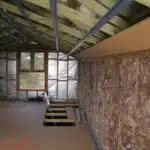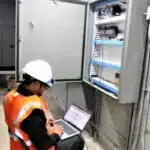As a home energy efficiency consultant, one of the most common concerns I come across from homeowners is the cost of heating their homes during the colder months. Heating costs can quickly add up and become a significant portion of a household’s budget. However, with some simple changes and adjustments, it is possible to reduce these costs without sacrificing comfort.
In this article, we will explore various ways to reduce home heating costs while maintaining a warm and comfortable living environment. We will discuss practical solutions that are easy to implement and can help you save money on your heating bills. Whether you are looking for short-term fixes or long-term investments in your home’s energy efficiency, these tips will provide you with the tools you need to achieve your goals.
Understanding Your Heating System
Your home heating system is like a well-oiled machine that keeps you warm during cold winter months. However, understanding how it works can help you reduce energy consumption and save money on your bills. One important aspect of this is thermostat programming. By setting your thermostat to the right temperature, you can avoid unnecessary heating and cooling cycles that lead to higher energy costs.
Another crucial factor in reducing home heating costs is regular maintenance of your heating system. This includes changing air filters regularly, inspecting ductwork for leaks, and cleaning vents and registers. Neglecting these tasks can cause your system to work harder than necessary, resulting in increased energy consumption and higher bills.
Keep in mind that proper thermostat programming and regular maintenance go hand-in-hand with each other. A well-maintained heating system will perform optimally when programmed correctly. Understanding these aspects of your home heating system will help you make informed decisions about how to reduce energy use in your home. In the next section, we’ll explore how conducting a home energy audit can help identify areas where improvements can be made.
Conducting A Home Energy Audit
A home energy audit is a vital step towards reducing your home heating costs. It helps you identify areas in your home that consume the most energy and provides insights into ways to reduce energy consumption. Conducting an energy audit can be done either by hiring a professional or doing it yourself.
DIY tips for conducting a home energy audit include checking for air leaks, inspecting insulation levels, and examining your heating system’s efficiency. Checking for air leaks involves identifying gaps around doors, windows, and other openings where heat may escape. Examining insulation levels entails inspecting the walls, attic, and basement to ensure they are adequately insulated. Lastly, assessing your heating system’s efficiency entails verifying the thermostat settings, cleaning filters, and ensuring proper maintenance.
Professional services can also help conduct an in-depth home energy audit. They use specialized equipment to detect areas of heat loss accurately. The results of this audit are more comprehensive than what can be achieved through DIY methods. Additionally, professionals provide recommendations on practical ways to improve your home’s energy efficiency while considering factors such as your budget.
Now that we have discussed conducting a home energy audit let’s dive into sealing air leaks in your house. By doing this simple task, you can significantly reduce your home heating costs while improving indoor comfort levels.
Sealing Air Leaks
One of the most significant contributors to heat loss in homes is air leaks. Air leaks can occur in various places, such as around windows and doors, walls, and chimneys. These leaks allow cold air to enter the house and warm air to escape, which results in higher heating costs. The good news is that you can seal these gaps with DIY methods or hire professionals for a more thorough job.
DIY air sealing involves identifying the problem areas and using materials such as weatherstripping, caulk, and foam sealants to fill gaps. This method can be effective if done correctly, but it’s crucial to use appropriate materials for each area. For instance, foam sealants work better on larger gaps compared to caulking or weatherstripping. However, hiring professionals for air sealing ensures a more comprehensive approach by using specialized equipment like blower doors.
While DIY air sealing may seem like a cost-effective solution, hiring professionals may be the best way to go. A professional energy auditor will conduct a comprehensive inspection of your home using thermal imaging cameras and other tools to identify all the leakage points accurately. They will then provide recommendations on how best to seal the leaks effectively without compromising indoor air quality. Additionally, they may offer other suggestions for improving energy efficiency in your home.
Insulating your home is another critical step in reducing heating costs and improving energy efficiency. By insulating properly, you can block heat transfer through walls and ceilings while keeping your home warmer during winter months. In the next section, we’ll discuss different insulation types suitable for different areas of your home.
Insulating Your Home
- Adding insulation to walls, ceilings, attics, and crawl spaces is an effective way to reduce home heating costs.
- Weatherizing windows and doors by caulking and installing weather stripping can also help to keep heat inside the home.
- Installing window coverings such as blinds and drapes can also help to reduce heat loss.
- Properly insulating a home can help to decrease energy bills significantly.
Adding Insulation
Are you tired of paying high heating bills during the winter months? Adding insulation to your home can help reduce those costs and provide many other benefits as well. With proper insulation, your home’s temperature will remain consistent, making it more comfortable for you and your family.
There are various types of insulation materials available on the market today, including fiberglass, cellulose, and foam board. Each type has its own unique benefits, such as improved energy efficiency or soundproofing capabilities. A professional home energy efficiency consultant can help you determine which type is best for your specific needs and budget.
Investing in insulation for your home may seem like a large expense at first glance, but the long-term benefits are worth it. Not only will you save money on heating costs, but you’ll also increase the value of your property and improve its overall comfort level. Don’t wait until the next cold snap hits – start exploring your options for adding insulation to your home today.
Weatherizing Windows
As a home energy efficiency consultant, I highly recommend weatherizing your windows to further improve your insulation efforts. Windows can be a major source of heat loss in the winter and heat gain in the summer, resulting in higher energy bills and decreased comfort levels. Fortunately, there are several DIY weatherizing tips you can implement to improve your windows’ energy efficiency.
One effective DIY method is applying weatherstripping around the window frames to seal any gaps or cracks. This can be done using simple materials such as adhesive-backed foam tape or silicone caulk. Another option is installing window film to reduce heat transfer through the glass. Professional weatherizing services can also provide more advanced solutions such as replacing single-pane windows with double-pane options or adding storm windows.
Investing in weatherizing your windows may seem like an additional expense, but it can have significant long-term benefits such as reduced energy bills and improved indoor comfort levels. Whether you choose to tackle this project on your own or seek professional assistance, taking steps to improve your home’s insulation will pay off in the end. So why wait? Start exploring your options for weatherizing your windows today and enjoy a more comfortable, energy-efficient home all year round.
Installing A Programmable Thermostat
A programmable thermostat is a valuable tool for reducing home heating costs. By allowing homeowners to set and forget their temperature preferences, they can save money on energy bills by reducing usage during times when they don’t need the heat as much. Programming tips include setting a lower temperature when no one is home or while sleeping, and raising it when people are present. This allows for energy savings without sacrificing comfort.
Thermostat maintenance is also important for maximizing energy efficiency. Regularly cleaning the thermostat with a soft cloth and checking for loose wires or connections can prevent malfunctions that waste energy. Additionally, ensuring that the thermostat is located in an area free from drafts or direct sunlight can help it accurately read the temperature.
Overall, installing a programmable thermostat can be an effective solution for reducing home heating costs. With proper programming and maintenance, homeowners can save money on energy bills without sacrificing comfort. In the following section, we will discuss another tactic for lowering your thermostat setting to further maximize savings.
Lowering Your Thermostat Setting
One effective way to reduce your home heating costs is by lowering your thermostat setting. This may seem like an obvious solution, but many homeowners overlook the significant impact of this simple adjustment. By reducing your thermostat setting by just a few degrees, you can save a significant amount on your monthly energy bills.
To compensate for the lower temperature, consider layering clothing and blankets to stay warm and comfortable. The benefits of layering are twofold: not only does it help you conserve heat, but it also allows you to adjust your clothing as needed throughout the day. This means you can easily regulate your body temperature without having to constantly adjust your thermostat.
Adjusting clothing is just one strategy for staying warm while keeping your thermostat low. Additionally, try closing off unused rooms and using draft stoppers under doors to prevent cold air from entering. These small adjustments can make a big difference in reducing heat loss and lowering your heating costs overall.
As we have discussed, lowering your thermostat setting is an excellent way to reduce home heating costs. By taking advantage of strategies such as layering clothing and adjusting unused spaces, you can stay warm and comfortable while saving money on energy bills. In the next section, we will discuss how to use curtains and blinds effectively for even greater energy savings.
Using Your Curtains And Blinds Effectively
- Positioning curtains correctly can have a significant effect on a home’s heating costs; the goal is to ensure that draughts are minimized and that heat is not allowed to escape.
- Window coverings, such as curtains, blinds and shutters, can be used to help control the amount of sunlight entering the home.
- Heavy curtains, particularly on south-facing windows, can be used to help reduce the amount of heat loss in winter months, while keeping windows uncovered during the summer months can help keep a home cool.
- The use of energy-efficient window coverings, such as insulated blinds and double-glazed windows, can also help to reduce home heating costs.
Positioning Curtains
One of the simplest yet effective ways to increase energy efficiency in your home is by positioning curtains strategically. Curtain placement may seem insignificant, but it can make a significant difference in reducing home heating costs. Curtains act as insulation and help retain heat inside the room, especially during cold weather.
To maximize energy savings, position curtains close to the windows and ensure they cover the entire window frame. Avoid leaving gaps as these allow cold air to seep into the room, and warm air to escape outside. Additionally, consider using thicker curtains or lining them with thermal materials such as fleece or wool for added insulation.
Another factor to consider when positioning curtains is sunlight exposure. During sunny weather, open curtains on south-facing windows during the day to allow natural light and warmth inside your home. However, remember to close them at night to prevent heat loss through the windows. Conversely, on north-facing windows, keep curtains closed during both day and night to reduce heat loss. By strategically positioning your curtains for maximum energy efficiency, you can significantly reduce your home heating costs while keeping your living space comfortable and cozy throughout the year.
Window Coverings
When it comes to maximizing energy efficiency in your home, using your curtains and blinds effectively can make a significant difference. While curtain placement is essential, the type of window covering you choose also plays a crucial role. There are several types of window coverings available, each with its unique features and benefits.
For example, cellular shades are an excellent choice for insulation as they trap air between the layers and prevent heat from escaping. Meanwhile, shutters offer a stylish alternative that allows you to control light and privacy while reducing heat loss. DIY window covering projects such as adding reflective film or installing insulated panels can also help increase energy efficiency.
However, choosing the right window covering is only half the battle. Proper usage is equally important in achieving optimal energy savings. For instance, keeping blinds closed during hot weather can prevent solar heat gain and reduce cooling costs. On the other hand, opening them during the day in winter can allow sunlight to warm your home naturally.
In conclusion, selecting energy-efficient window coverings and using them effectively can significantly reduce your home’s heating and cooling costs while enhancing comfort levels. As a home energy efficiency consultant, I recommend exploring different options such as cellular shades or shutters while considering factors such as light exposure and style preferences. By taking a strategic approach to window coverings, you can create an environment that is both sustainable and comfortable for years to come.
Closing Doors To Unused Rooms
Using your curtains and blinds effectively is a great way to reduce home heating costs. However, there are additional steps you can take to further decrease energy consumption and lower your bills. One of these steps is closing doors to unused rooms.
Closing doors to unused rooms can have numerous benefits for your home’s energy efficiency. By shutting off these areas, you’re preventing the loss of heat from circulating throughout the entire house. This means that any heat generated by your heating system will stay in the spaces where it’s needed most, such as the living room or bedrooms where you spend most of your time. Additionally, closing doors to unused rooms can help regulate the temperature in individual spaces, making it easier to maintain a comfortable environment without relying on more energy-intensive solutions like space heaters or fans.
While closing doors to unused rooms can be an effective way to save money on your energy bills, there are some potential cons to consider. If you have a central HVAC system, closing too many doors could create negative pressure within your home’s ductwork. This could cause air leaks or other problems that could negatively impact indoor air quality or put additional strain on your heating and cooling system. It’s also important to note that if you have pets or children who need access to certain areas of the house throughout the day, closed doors may not be practical.
Maximizing natural sunlight is another great way to reduce home heating costs while simultaneously improving overall comfort levels in your living space.
Maximizing Natural Sunlight
- Window coverings are an effective way to maximize the amount of natural sunlight that enters the home and reduce heating costs.
- Planting trees near windows can increase shade in the summer and allow more sunlight in the winter.
- Careful positioning of windows can help ensure that the sun’s rays are maximized during the winter months.
- Dark colored window coverings can absorb heat from the sun, which can help reduce home heating costs.
- Trees planted in front of windows can provide a natural barrier to reduce heat loss in the winter months.
- Strategically placing windows in a room can make the most of the sun’s rays and reduce the need for artificial heating.
Using Window Coverings
Maximizing natural sunlight is a great way to reduce home heating costs, and using window coverings can help achieve this. Choosing the right materials for window coverings is essential as it can impact the amount of heat that enters or exits your home. Materials such as cellular shades, insulated curtains, and blinds with thermal backing are excellent options. These materials not only block out the cold but also keep your home cool during summers.
Styling options for window coverings are vast, and you can choose from a variety of colors, patterns, and designs to match your decor. However, it’s important to note that lighter-colored coverings reflect heat better than darker ones. If you prefer darker colors, ensure that they have insulation properties to prevent heat loss. Additionally, installing window films can provide extra insulation while still allowing natural light into your home.
In conclusion, using window coverings is an effective way of maximizing natural sunlight while reducing home heating costs. By choosing the right materials and styling options for your window treatments, you can create an energy-efficient environment in your home without sacrificing style or comfort. So why not consider upgrading your windows with these cost-saving solutions today?
Planting Trees
To further maximize natural sunlight in your home, planting trees is another viable option. Not only do trees provide shade in the summer months, but they also act as a natural barrier against cold winds during winter. However, it’s important to carefully consider tree species selection and placement strategies to ensure that they are effective in reducing home heating costs.
When selecting tree species, it’s essential to choose those that are well-suited for your climate and soil conditions. Trees with dense foliage such as conifers or evergreens can provide better insulation than deciduous trees. Additionally, planting trees on the north and northwest sides of your home can act as a windbreak and reduce heat loss.
Furthermore, tree placement strategies can also impact their effectiveness in reducing home heating costs. Planting trees close to windows or walls can create a buffer zone that prevents cold air from entering or warm air from escaping your home. However, it’s important to consider the potential growth of the tree and how it may affect the surrounding area over time.
By carefully considering tree species selection and placement strategies, you can maximize natural sunlight in your home while reducing energy consumption and costs. Incorporating this approach along with other cost-saving solutions such as window coverings can create an energy-efficient environment without sacrificing comfort or style.
Positioning Windows
To further maximize natural sunlight in your home, it’s essential to consider the positioning of your windows. Proper window placement can significantly impact the amount of natural light that enters your home and reduce energy consumption. As a home energy efficiency consultant, I recommend evaluating the current insulation of your windows and considering various window treatments.
Window insulation is critical in preventing heat loss during the winter months and reducing heat gain during summer. Upgrading to double or triple-pane windows is an effective way to improve insulation and reduce energy consumption. Additionally, weather stripping around window frames can prevent drafts and keep warm air inside during colder seasons.
Window treatments such as blinds, curtains, or shades can also enhance natural sunlight while minimizing heat gain or loss. For example, using reflective shades or blinds on south-facing windows can reduce heat gain in the summer while allowing natural light into your home. Choosing insulated curtains or drapes for north-facing windows can increase insulation during colder seasons while still allowing natural light to enter.
By considering window positioning and incorporating proper insulation and treatments, you can maximize natural sunlight in your home while reducing energy costs. As an energy efficiency consultant, my goal is to help you create an environment that is both comfortable and cost-effective. Let’s work together to achieve this goal!
Using Space Heaters Wisely
Space heaters can be a great way to supplement your home heating system and reduce energy costs. However, it is important to use them wisely and safely to avoid potential hazards. When using space heaters, always make sure they are placed on a flat, stable surface away from flammable materials such as curtains or papers. Be sure to also keep them out of reach of children and pets.
In addition to safety precautions, choosing an energy efficient space heater can help save money on energy bills. Look for models with programmable thermostats and timers that allow you to control when the heater turns on and off. Also consider purchasing a space heater with a high efficiency rating, which will use less energy to heat the same amount of space compared to lower rated models.
Remember that while space heaters can be helpful in reducing home heating costs, they should not be relied upon as the sole source of heat for your home. It is important to have a well-maintained central heating system in place as your primary source of warmth during colder months. By using space heaters wisely and efficiently, you can complement your existing heating system and potentially save money on energy bills.
Transition: Now that we’ve covered how to use space heaters safely and efficiently, let’s move onto another important aspect of reducing home heating costs – choosing the right heating fuel.
Choosing The Right Heating Fuel
One of the biggest expenses homeowners face during the winter season is heating their homes. In fact, according to the U.S. Energy Information Administration, home heating accounts for an average of 42% of annual energy use in households across the country. This figure highlights the importance of making informed choices when it comes to selecting and utilizing heating fuels that are both cost-effective and sustainable.
Comparing prices is a key step in determining which heating fuel is best suited for your home. The price of heating fuels can vary significantly depending on your location, so it’s important to research local prices before making a decision. For instance, natural gas may be cheaper than propane in some areas but more expensive in others. Similarly, while oil may be cost-effective in some regions, it may not be available or affordable in others.
Another crucial factor to consider when selecting a heating fuel is its environmental impact. Some fuels release more pollutants into the air than others and contribute to climate change. For example, burning coal produces high levels of carbon dioxide emissions, which have been linked to global warming. On the other hand, renewable energy sources such as solar power and geothermal energy are clean alternatives that can reduce your environmental footprint while providing reliable heat.
Choosing the right heating fuel requires careful consideration of several factors such as cost-effectiveness and environmental impact. Once you’ve decided on a fuel source, maintaining your heating system is essential for ensuring that it runs efficiently and effectively throughout the winter months without driving up your energy bills unnecessarily.
Maintaining Your Heating System
Regular maintenance of your heating system is essential to ensure it functions efficiently and reduces your home heating costs. Neglecting regular maintenance can lead to a decrease in the lifespan of the system, resulting in costly repairs or replacements. Therefore, it is crucial to have a maintenance plan in place that includes regular cleaning and inspection of the heating components.
To maintain your heating system’s efficiency and reduce energy bills, it is recommended to have a professional inspection at least once a year. A professional inspector will thoroughly examine all parts of the heating system, including the ducts, filters, and airflow. They will also identify any potential issues that may impact your system’s performance and provide you with useful recommendations on how to fix them.
In summary, regular maintenance and professional inspections are critical for maintaining your heating system’s efficiency and reducing home heating costs. By taking these measures, you can ensure that your heating system runs smoothly throughout its lifespan while saving money on energy bills. In the subsequent section, we will discuss upgrading to energy-efficient appliances as another means of reducing home heating costs.
Upgrading To Energy-Efficient Appliances
Once you have identified areas of your home that require improvement, upgrading to energy-efficient appliances is the next logical step to reduce your home heating costs. Energy Star certified appliances are designed to use less energy and save you money in the long run. These appliances are typically more expensive than their traditional counterparts, but the cost savings they provide will offset the initial investment.
Appliance replacement can be costly, so it’s important to choose an appliance that fits your budget while also being energy efficient. When shopping for a new appliance, look for Energy Star certified models with high efficiency ratings. For instance, an Energy Star certified furnace could save up to 15% of your heating costs compared to a conventional model. Other common household appliances such as refrigerators, washing machines, and dishwashers can also benefit from Energy Star certification.
In summary, upgrading to Energy Star certified appliances is an effective way to reduce your home heating costs. While the upfront cost may seem daunting, the long-term savings are well worth it. Look for appliances with high efficiency ratings that fit within your budget and start enjoying lower energy bills today. In our next section, we’ll discuss how taking advantage of rebates and incentives can further offset the cost of upgrading your home’s energy efficiency.
Taking Advantage Of Rebates And Incentives
As we have discussed in the previous section, upgrading to energy-efficient appliances is a great way to reduce home heating costs. However, there are also other ways to save money on your energy bills. One of these is taking advantage of rebate eligibility and incentive programs.
Rebate eligibility and incentive programs are offered by many utility companies and government agencies. These programs provide financial incentives for homeowners who make energy-efficient upgrades to their homes. Rebates can range from a few hundred dollars to thousands of dollars, depending on the type of upgrade and the program you qualify for.
If you’re interested in taking advantage of these programs, it’s important to do your research first. Many programs have specific requirements for eligibility, such as income limits or specific types of upgrades that qualify. You’ll also want to make sure that the program you choose is reputable and offers legitimate incentives. A qualified home energy efficiency consultant can help guide you through this process and ensure that you’re getting the maximum benefit from available rebate eligibility and incentive programs.
In summary, taking advantage of rebate eligibility and incentive programs is an excellent way to reduce your home heating costs while making your home more energy-efficient. By doing your research and seeking professional advice and assistance, you can ensure that you’re getting the most out of these valuable programs.
Seeking Professional Advice And Assistance
Professional consultation can be invaluable for those seeking to reduce their home heating costs. A qualified consultant can provide an objective assessment of the home’s energy usage and identify areas where improvements can be made. This may include recommendations for upgrades to insulation, windows, or heating systems.
While some homeowners may be hesitant to seek professional assistance due to concerns about cost, there are many budget-friendly solutions available. Some consultants offer free or low-cost initial assessments, and many energy efficiency upgrades qualify for rebates or tax credits. Additionally, investing in energy-efficient upgrades can ultimately lead to significant long-term savings on heating bills.
Ultimately, seeking professional advice and assistance is a wise investment for those looking to reduce their home heating costs. By working with a qualified consultant, homeowners can identify cost-effective solutions that will not only save money but also improve the overall comfort and efficiency of their homes.
Conclusion
Understanding your heating system is crucial when it comes to reducing home heating costs. Conducting a home energy audit can help you identify areas where heat may be escaping and provide valuable insights into potential solutions. Sealing air leaks and insulating your home are effective ways to reduce heat loss and lower your energy bills.
Installing a programmable thermostat can also help you save money by allowing you to adjust the temperature based on your schedule. Maintaining your heating system is important to ensure it runs efficiently, and upgrading to energy-efficient appliances can further reduce your energy consumption. Taking advantage of rebates and incentives can also help offset the cost of these upgrades.
Seeking professional advice and assistance from a home energy efficiency consultant can provide additional guidance on how to reduce your heating costs. As one of my clients recently shared with me, “Reducing our heating costs was like closing the window on a cold winter’s day – initially uncomfortable, but ultimately rewarding.” By implementing these strategies, you too can enjoy the warmth of a comfortable home while saving money in the process.
Image Credits
- “Home Heating Assistance Forum in Milford” by CT Senate Democrats (featured)





























